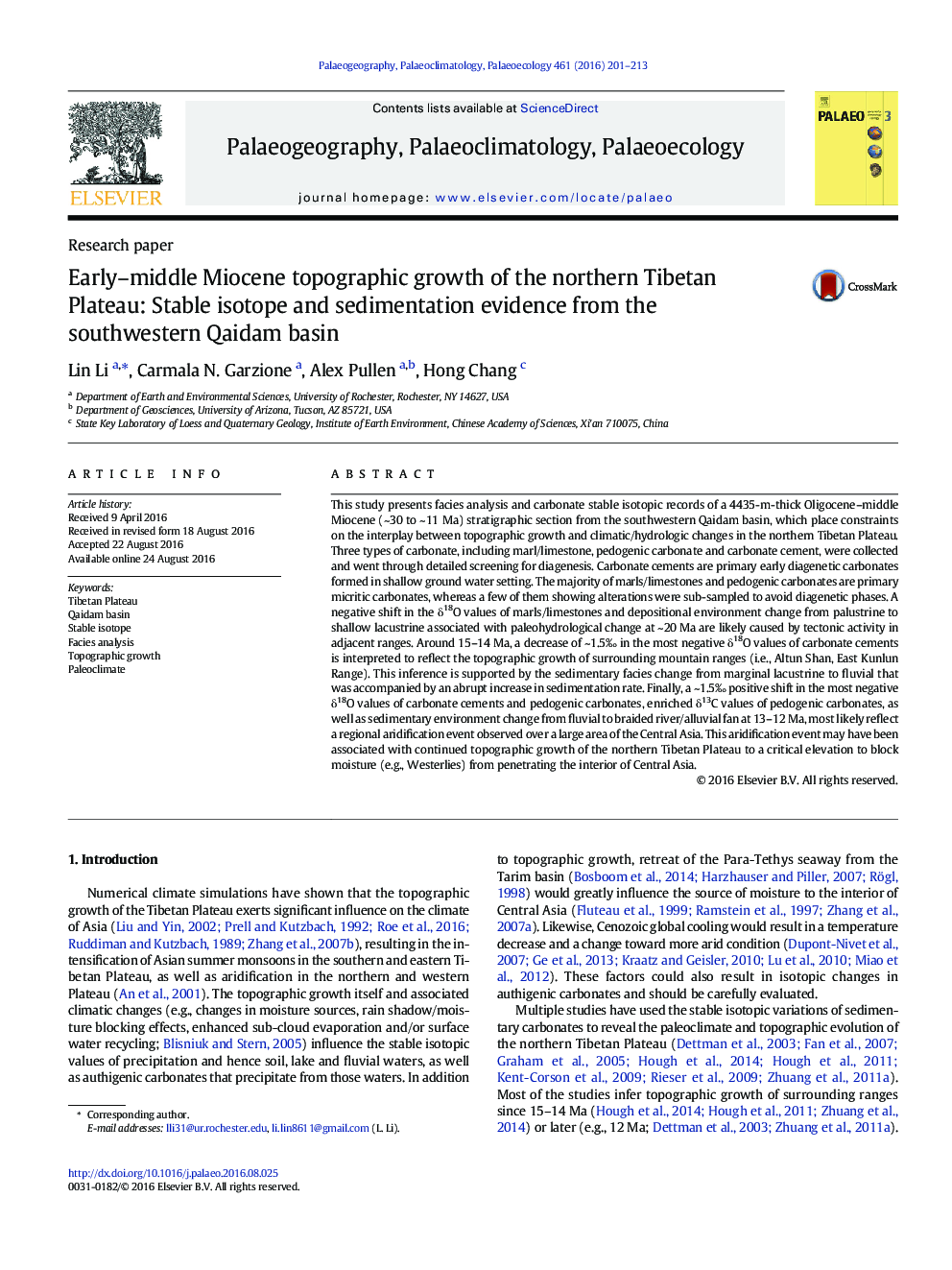| کد مقاله | کد نشریه | سال انتشار | مقاله انگلیسی | نسخه تمام متن |
|---|---|---|---|---|
| 4465533 | 1622130 | 2016 | 13 صفحه PDF | دانلود رایگان |
• A long (31–11 Ma) stable isotopic section in the southwestern Qaidam basin, northern Tibetan Plateau
• ~ 20 Ma paleohydrological change is probably associated with early deformation/initial range growth in northern Tibet.
• 15–14 Ma negative shift of δ18O values reflects topographic growth in catchment regions (Altun and East Kunlun).
• 13–12 Ma regional aridification was mostly likely caused by moisture blocking effect of growing mountain ranges.
This study presents facies analysis and carbonate stable isotopic records of a 4435-m-thick Oligocene–middle Miocene (~30 to ~11 Ma) stratigraphic section from the southwestern Qaidam basin, which place constraints on the interplay between topographic growth and climatic/hydrologic changes in the northern Tibetan Plateau. Three types of carbonate, including marl/limestone, pedogenic carbonate and carbonate cement, were collected and went through detailed screening for diagenesis. Carbonate cements are primary early diagenetic carbonates formed in shallow ground water setting. The majority of marls/limestones and pedogenic carbonates are primary micritic carbonates, whereas a few of them showing alterations were sub-sampled to avoid diagenetic phases. A negative shift in the δ18O values of marls/limestones and depositional environment change from palustrine to shallow lacustrine associated with paleohydrological change at ~20 Ma are likely caused by tectonic activity in adjacent ranges. Around 15–14 Ma, a decrease of ~1.5‰ in the most negative δ18O values of carbonate cements is interpreted to reflect the topographic growth of surrounding mountain ranges (i.e., Altun Shan, East Kunlun Range). This inference is supported by the sedimentary facies change from marginal lacustrine to fluvial that was accompanied by an abrupt increase in sedimentation rate. Finally, a ~1.5‰ positive shift in the most negative δ18O values of carbonate cements and pedogenic carbonates, enriched δ13C values of pedogenic carbonates, as well as sedimentary environment change from fluvial to braided river/alluvial fan at 13–12 Ma, most likely reflect a regional aridification event observed over a large area of the Central Asia. This aridification event may have been associated with continued topographic growth of the northern Tibetan Plateau to a critical elevation to block moisture (e.g., Westerlies) from penetrating the interior of Central Asia.
Journal: Palaeogeography, Palaeoclimatology, Palaeoecology - Volume 461, 1 November 2016, Pages 201–213
